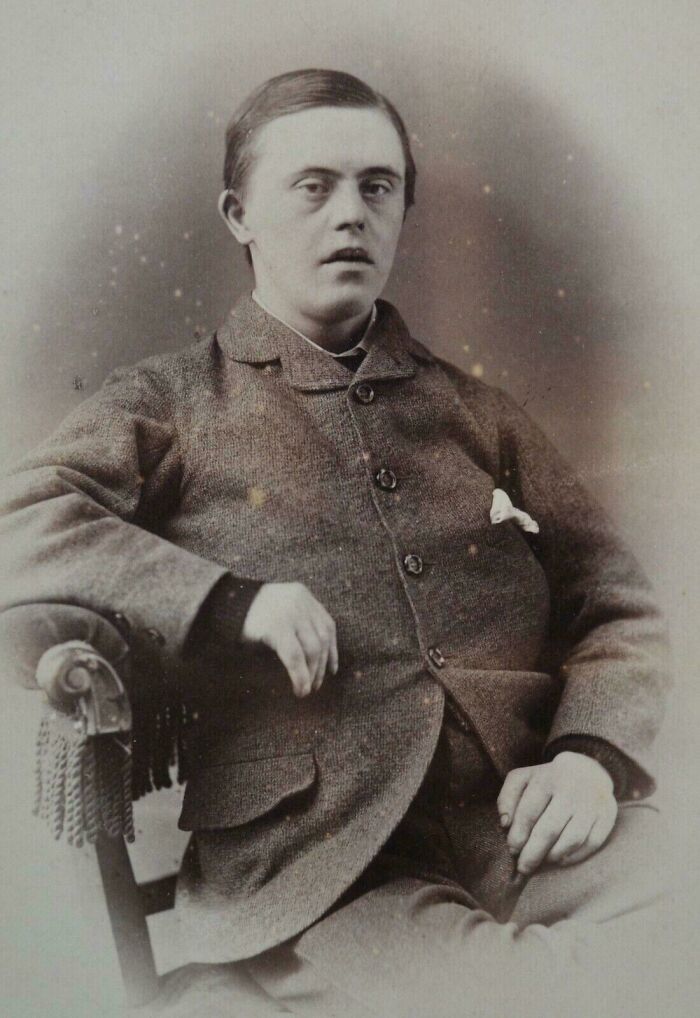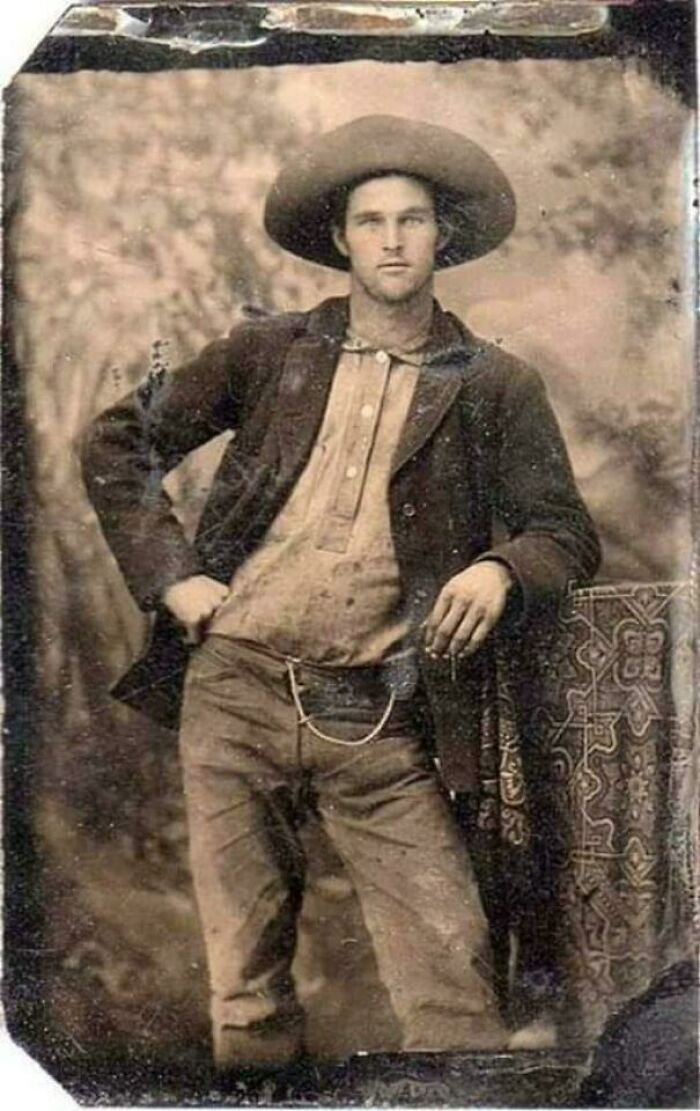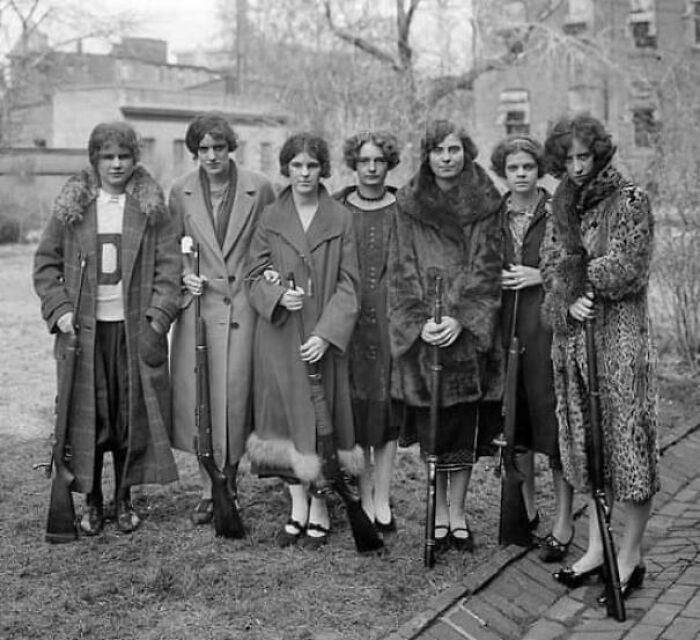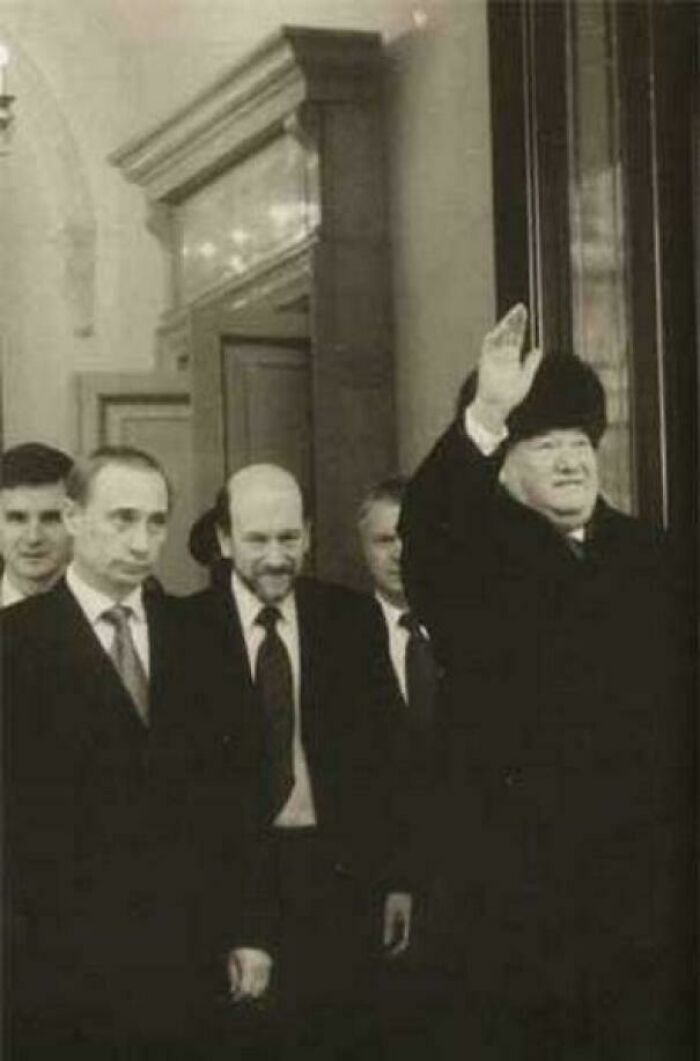Pictures illuminate the shadows of history, revealing the forgotten people and places that otherwise may have faded into oblivion. They help us make sense of the past and, in turn, allow us to understand the present.
So we at Bored Panda decided it would be a nice idea to explore the subreddit 'Rare Historical Photos' — it has 40,000 members constantly digging through the archives and sharing their best finds. Prepare to be transported through time!
This post may include affiliate links.
Ojibwe Woman, Ponemah, Minnesota, Photograph Taken By Roland W. Reed C.1908
A Seaman's Request For An Extraordinary Leave Of Absence, 1967. Reason: “My Wife Is Planning To Get Pregnant This Weekend And I Would Like To Be Present.”
But who needs history anyway? Some people wonder why we should bother studying it when we could be preparing for the future instead. But think about it: can we be ready for what's coming if we don't know what's happened before? The past gives us all kinds of insights that can help us tackle the challenges of today and tomorrow. Without that knowledge, we could be in for some tough times.
As American historian and journalist Eric Alterman pointed out, since our political discourse is increasingly dominated by sources who care nothing for truth or credibility, we come closer and closer to the situation that Walter Lippmann warned about a century ago, in his seminal 'Liberty and the News.'
"Men who have lost their grip upon the relevant facts of their environment are the inevitable victims of agitation and propaganda. The quack, the charlatan, the jingo ... can flourish only where the audience is deprived of independent access to information,” he wrote.
Renowned Photographer Walter Chandoha Created One Of His Most Famous Photographs Of His Daughter Paula And A Small Kitten Smiling At The Camera At The Same Time, 1955
Neither of them had top teeth. This is one of my favorite old pictures.
A Police Officer Playing Duck Duck Goose With Children In New York, 1970
I wonder how many women officers were employed at this time period.
A GI Shares His Rations With Two Italian Children, 1944
Historian Daniel Bessner agrees. "If Americans don’t seriously invest in history and other humanities disciplines, we encourage the ahistoric ignorance ... Progress depends on studying and arguing about the past in an open and informed manner."
According to Bessner, this is especially true nowadays, when people use history to fight over which vision of the country will dominate the political scene.
A Former Prisoner Points Out The Most Brutal Guard. Germany. 1945
A Baby Lamb Snuggles Up To A Sleeping Boy, 1940
Girls Sent Home From Mckinley High School For Wearing Slacks And Blue Jeans, Chicago, 1946
Eternal respect to the people who paved and continue to pave the way for gender equality
The Oldest Indian, John Smith, Managed To Live In Three Centuries At Once, Being Born In The 18th Century, Living Throughout The 19th Century And Dying In The 20th Century. It Is Alleged That He Lived For About 137 Years
Dr. Darren R. Reid, who earned his Ph.D. from the University of Dundee and is now a lecturer at Coventry University, explained to Bored Panda for our earlier publication on historical pictures that images are an incredibly important part of how we understand the past.
"They give us a distinct look into how people and societies viewed themselves and each other," Reid said back then. "In the medieval period, for example, Jesus and the saints were often depicted as physically larger than ordinary people — not because they were believed to be taller, but because they occupied a higher status in the minds of the artists who produced these images, and the audiences who consumed them. In later centuries, Europeans (and their descendants) looked to the classical world for inspiration, spending huge amounts of time (and money) on images that were both increasingly realistic and idealized."
A Dog Says Goodbye To His Fallen US Soldier Friend. Afghan War, 2004
Vancouver's First Official Lifeguard, Joe Fortes, 1905. Fortes, Who Was Born In Trinidad And Tobago, Was Credited With Saving Dozens Of Lives And Was Known As "Old Black Joe"
Shy Young Woman Smiling For The Camera 143 Years Ago
Reid added that "Native Americans and American colonizers were frequently depicted in classical poses — all deliberate choices that show us how many people perceived the invasion of the Americas and the genocides that occurred there."
"They also include important details (such as items of clothing, hairstyles, etc.) that help us to picture the past. For modern people, this means we can more accurately imagine, and perhaps, empathize with the very different folks who came before us."
Portrait Of A Family. Georgia, USA, Circa 1900
The Ship "Queen Elizabeth" Arrives At The Port Of New York. On Board Are Soldiers Returning From World War II, 1945
A Young Woman Photographed In The 1910s
Five-Year-Old Albert Einstein, 1884
His hair was already trying desperately to be crazy. Soon, Albert, soon.
Darren R. Reid highlighted that developing an eye for visual storytelling allows us to detect when someone's trying to bend the narrative.
"The invasion of the Americas was frequently sanctioned and/or driven by governments, but it was the acts of 'ordinary' people that made it possible, and across that continent, a huge body of work was produced to justify, even encourage some really terrible acts," he said.
"American comic books and movies depicted Native Americans as simple, brutish, and savage. This helped to justify genocide and colonization as it was ongoing — and justify it, long after the most violent part of the process was complete. For a great example, check out the awful depiction of Native Americans in Disney’s Peter Pan. They helped to justify the colonial project to generations of children, right up to the present day."
This Is What The Empire State Building Looked Like Against The Background Of Other Buildings, 1941
One tower looks so much more impressive than the mass of skyscrapers today.
Abraham Lincoln In 1861 And 1865. A Noticeable Four-Year Contrast Against The Backdrop Of War
An Old Fisherman Photographed In Bergen, Norway In 1902 By Anders Beer Wilse
New York, 1958. Dancers In A Nightclub Play Chess. Smartphones Haven't Been Invented Yet
... Thanks for clarifying that smartphones hadn't been invented. I was SO confused. /s
Today, 66 percent of the global population and 97 percent of the U.S. population use the internet where they are under a constant barrage of content. Hopefully, places like the subreddit 'Rare Historical Photos' will help them navigate the overwhelming amount of information.
Canadian Prime Minister Pierre Elliott Trudeau Carries The Country's Future Prime Minister Justin Trudeau Under His Arm. Ottawa, 1973
With Her Husband At War, Mom Works On The Car, 1944
That's the kind of woman my daughter turned out to be. She spent hours under a car with me when she was little, strictly out of curiosity. Today she can change her own oil and brakes and changing a flat tire is child's play to her.
A Lady From High Society. Ottoman Empire, 1900s
Man With Down’s Syndrome, 1890s
Young Couple Standing At A Speed Limit Sign. Oklahoma, 1920s
Republican Party Supporters And Democratic Party Supporters Fight With Snowballs In Front Of The Capitol. January, 1921, Washington, USA
Queue For The Premiere Of The Star Wars Film. Vancouver, 1977
I went to the Denver premier, it was a long line there too. It was awesome.
Early Use Of A Selfie Stick In The 1940s
American Soldier Returning Home From The Great War, Ca 1918-19
A Youthful Marine, Da Nang, Vietnam, August 3, 1965
A Cowboy, 1890s
Goodyear Illuminated Tires, 1961
Pictured Is Paul Overby, One Of Two Drivers Trapped In The Cab Of The Truck. He Is Pulled By A Rope In The Pit River Bridge Over Lake Shasta Near Redding, California, May 3, 1953. Both Overby And His Partner Hank Baum Were Rescued Before The Car Plunged And Caught Fire
A Typical American Family In 1950s, Detroit, Michigan
Airmail Pilot, William “Wild Bill” Hopson Of The U.S. Mail Service In Omaha, Nebraska, 1926
A Mexican Baker, 1880-90s
A Victorian Home Being Moved Via Horse Power. San Francisco, California, USA. 1908
The big Victorian villa I flatted in as a student was moved like that. It used to be next to the local university and was moved by horse and dray to a suburb about 4 km away in 1902. Apparently it operated as a brothel for a while (a decade before I moved in!). It had a ghost in the living room and another one on the front porch. I met my partner when we both rented separate flats on the lower floor; after a year we moved into the very large flat upstairs with other flatmates and 37 years later we are still together (in our own home)
Service At The Track Restaurant In Los Angeles, 1950s. Food Was Delivered Via Conveyor Belt Directly To Cars
A Lady Walks Around Renting Out Books As A “Walking Library.”
Cab Drivers In Madison Square Garden, New York, 1900
Drexel Institute Girls’ Rifle Team. Philadelphia, USA
Better not mess with them especially if they have a goose with them 😳
Crossing Over The Thames. Photo By René Groebli, 1949
People Sit On A Curb Amid Confetti And Papers After Celebrating The End Of World War II In New York City On August 14, 1945
Downtown Boston, 1910
Damn that's cool. I wonder if I can get a high res version because I'd love that as my desktop background.
A Fashionable Young Woman Exiting A NYC Streetcar In 1912
A Gentleman Tips His Hat To A Group Of Ladies, 1920s
Photo Of Marilyn Monroe First Wedding, She Was 16 Years Old, 1942
She had been through several foster homes, where she was sexually abused. She married the neighbor's son to avoid being sent back to the orphanage. The photos of Norma Jean when she was discovered at a wartime factory show a young woman with thick, curly reddish brown hair.
Passengers Onboard The Staten Island Ferry. New York, USA. 1895
No cell phones. I wonder if distant folks lamented the advent of newspapers.
John D. Rockefeller Gifting A 5-Cent Coin To A Child, 1929
Little Leonardo Dicaprio And His Parents George And Irmelin, 1976
Yes, quite a few I hadn't seen before.
Load More Replies...Just want to remind all the "NaTuRaL BeAuTy" commenters - they did retouch photos back in the day, especially portraits because they weren't so common and cheap. Smooth skin, bigger and smaller body parts, backgrounds...
Einstein's child photo is hand colored- a common and commercial process then.
Load More Replies...Historical pictures, yes. Nice, yes. Quite a number of them -like pretty women (possibly retouched) are not suited to change any of my perspectives on the past, though.
Yes, quite a few I hadn't seen before.
Load More Replies...Just want to remind all the "NaTuRaL BeAuTy" commenters - they did retouch photos back in the day, especially portraits because they weren't so common and cheap. Smooth skin, bigger and smaller body parts, backgrounds...
Einstein's child photo is hand colored- a common and commercial process then.
Load More Replies...Historical pictures, yes. Nice, yes. Quite a number of them -like pretty women (possibly retouched) are not suited to change any of my perspectives on the past, though.

 Dark Mode
Dark Mode 

 No fees, cancel anytime
No fees, cancel anytime 




























































































































